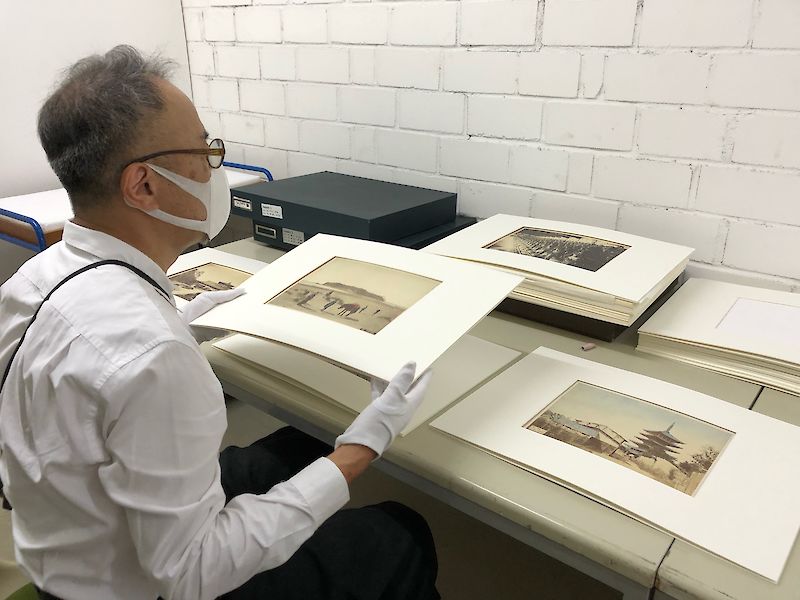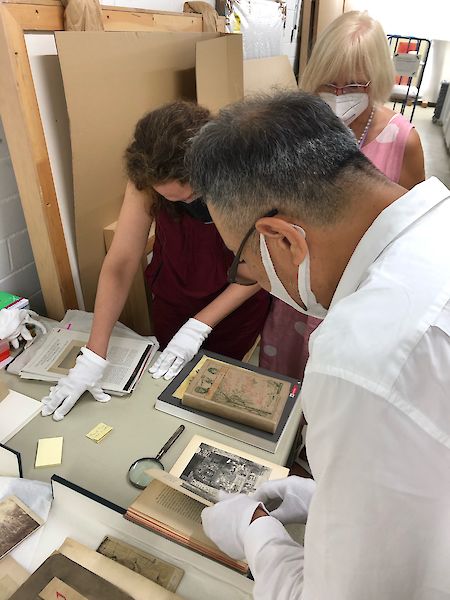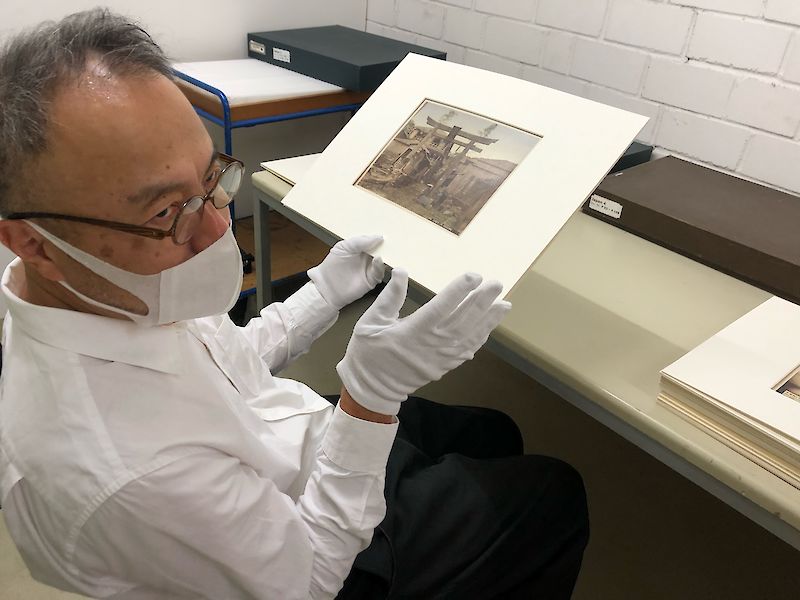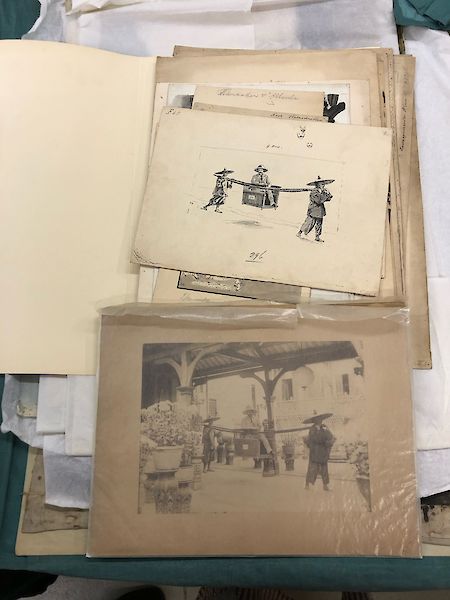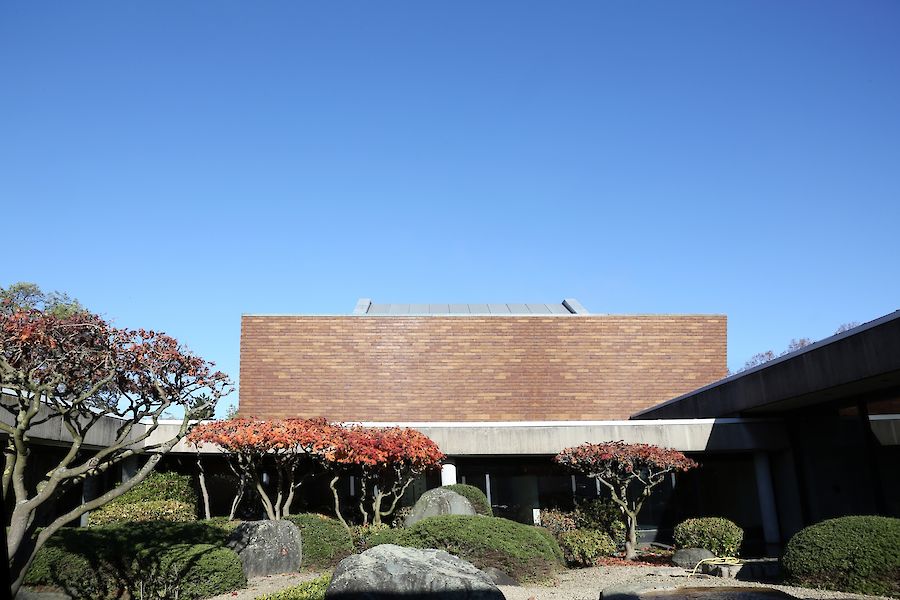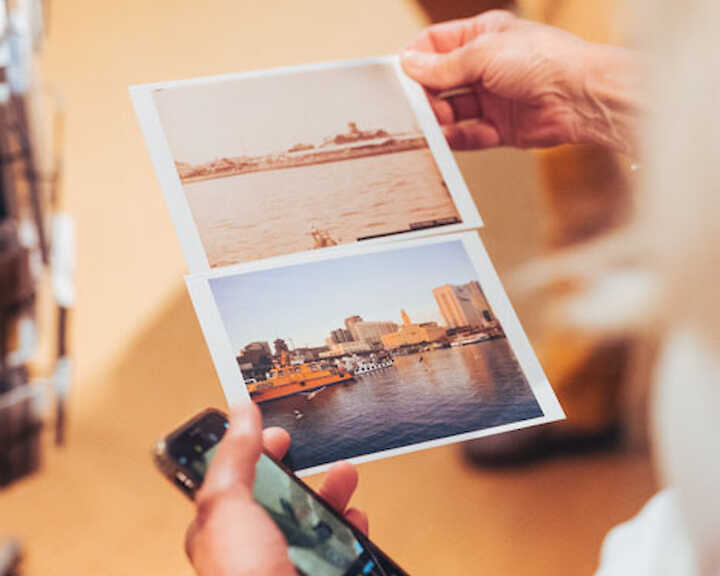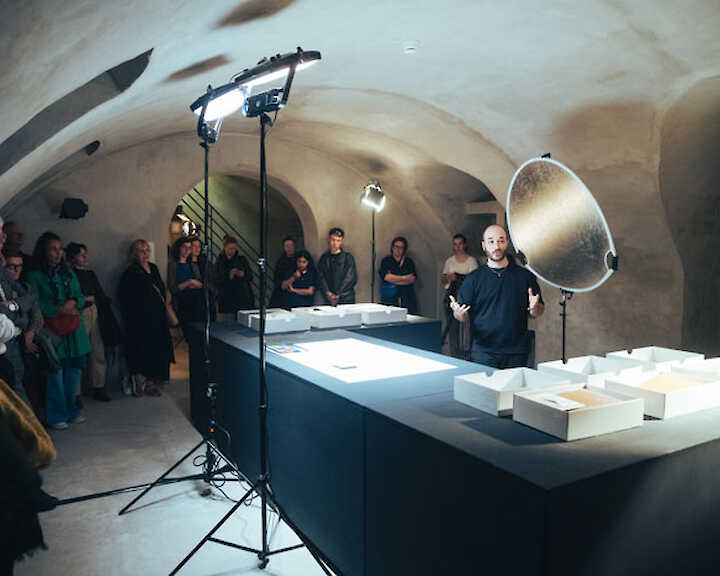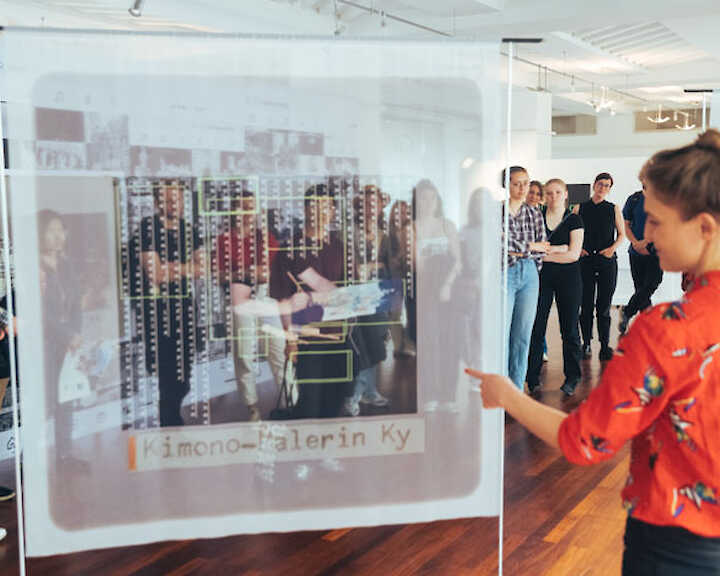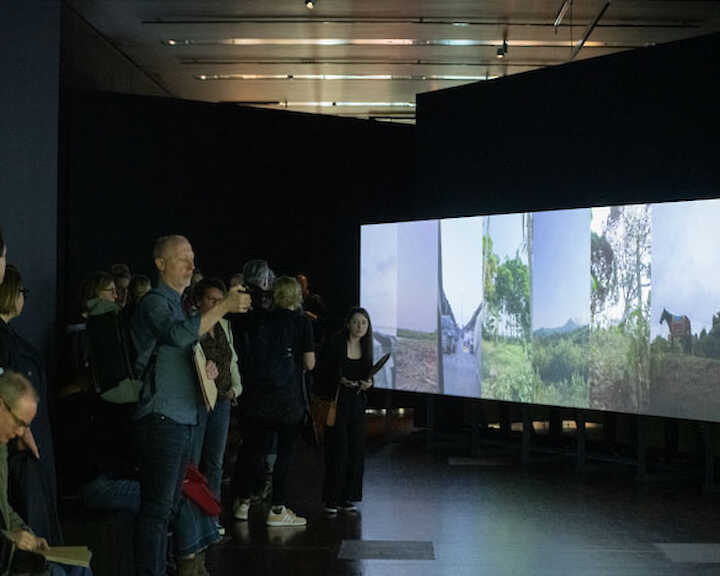
Naoya Hatakeyama's work features series on landscapes and architecture that document a man-made nature in which he himself, however, no longer appears. In Germany, Hatakeyama photographed, among other things, the controlled detonation of the Westfalen I/II Zeche in 2003. Furthermore, he was awarded the Kimura Ihei Award of Photography in 1997 and the Mainichi Art Award in 2000.
For his exhibition at the Museum of East Asian Art, Naoya Hatakeyama uses photographs of Japanese landmarks from the Meiji era of Japan (1868-1912) as inspiration for his own photographic investigation of these places. He is interested in the temporal aspect that lies between the tourist views of the time and the landscape of today. The playful juxtaposition of archive material and his own photographs also opens up the spectrum between photography as a document and photography as a work of art.
Naoya Hatakeyama at the Photoszene-Festival 2023
Naoya Hatakeyama was interviewed by students in the master's programme "Photography Studies and Research", which is led by Prof. Dr. Steffen Siegel. He talks about his artistic practice and his residency project.
Interview with Naoya Hatakeyama
More information about Naoya Hatakeyama:
https://www.takaishiigallery.com
Naoya Hatakeyama visits the archive at the Museum of East Asian Art
Museum of East Asian Art Cologne
The Museum of East Asian Art of the City of Cologne is the only museum in Germany that specialises exclusively in the art of East Asia. It holds numerous, world-famous works of art from China, Korea and Japan; its highlights include Buddhist painting as well as sculpture and sculpture in great diversity and on the highest international level. Opened in 1913, the museum emerged from the art collection of the married couple Adolf and Frieda Fischer, which they had acquired in East Asia. On their purchasing trips along the European steamship routes, which led via Istanbul to Yokohama, they also gained an extensive collection of photographs from mainly commercial photo studios in the large port cities, which were established by local and European photographers after the opening of the Suez Canal in 1869 in order to meet the demand for travel photographs. The collection of around 1,500 prints also includes photographs taken by Adolf Fischer himself during his various trips. There is also a series of photoalbums from the estates of German military personnel who were stationed in China and preferred to spend their holidays in Japan. While the images from China often convey colonialist messages, the hand-coloured photographs from the Japanese photo studios refer to the influence of Japanese woodblock prints. After a bombing raid in 1944, the former museum building and parts of the collection were destroyed, including the glass plates from the photo collection. After initially being forgotten, the surviving collection was rediscovered in the 1990s and acquired its own status within the museum collection, which has since received greater focus ever since.
More Information
